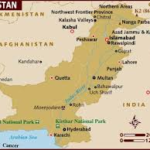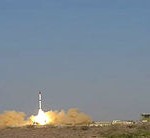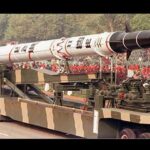क्या भारत आणविक बमों व् मिसाइल मैं पाकिस्तान से काफी पीछे है ?
पाकिस्तान ने कारगिल पर इसलिए चढ़ाई की थी क्योंकि उसे अपनी आणविक शक्ति पर भरोसा था जो ठीक भी निकला . हम सिर्फ एल ओ सी की अपनी ओर से लड़ते रहे जबकि पाकिस्तान ने हमेशा हम पर हमला कर दिलेरी दिखलाई है. १९४७, ६५ व् कारगिल की लड़ाई पाकिस्तान ने इस लिए ही शुरू की थी की उसे हिन्दुओं की कायरता पर पूर्ण विश्वास था ( क्रॉस स्वोरेड किताब पढ़ें ). अब फिर सऊदी अरेबिया के ईरान से बराबरी करने की आकांशा ने पाकिस्तान को सोने की खान दे दी है . वह हमसे परमाणु बमों व् मिसाइल मैं हम से आगे निकल गया है.हमारी कोई मदद नहीं कर रहा है . हमारे अग्नि मिसाइल अभी टेस्ट ही हो रहे हैं और सेना मैं अभी प्रविष्ट नहीं हुए हैं . दबे स्वरों मैं उनके इतने अच्छे न होने की बात भी कही जा रही है .
पाकिस्तान रक्षा की राजनीती मैं हमसे सदा आगे ही रहा है . कभी अमरीका फिर चीन और अब सऊदी अरेबिया उसकी सहायता करते रहे हैं . इसके बाद रूस लाइन मैं खडा है. वह भी अमरीका के विरुद्ध चीन व् पाकिस्तान की मदद कर सकता है. भारत की स्वाबलंबन की नीति निस्संदेह दूरगामी रूप से तो अच्छी है पर रक्षा पर इतने खर्चे के बाद भी पिद्दी पाकिस्तान हमसे दो हाथ करने को सदा ही तैयार रहता है . लगता है इतने वर्षों की विदेश नीति ने न तो हमें किसी का बनाया न ही किसी को हमारा बनाया . परन्तु पाकिस्तान की दुर्दशा के लिए भी उसके यही मित्र दोषी हैं . देखें की जब हम सुपरपावर होंगे तो पाकिस्तान किस्से मिल कर हमें ठेंगा दिख्येगा . यह अलग बात है की तब तक उसकी हस्ती ठेंगे भर की रह जायेगी .
तो क्या कहें की भारत की ‘ न काहू से दोस्ती न काहू से बैर ‘ ही अच्छी नीति है ?
इन सब बातों का टेस्ट तो अगले युद्ध मैं ही होगा ?
नीचे दोनों लेख संलग्न हैं
Washington: Pakistan had about 120 atomic weapons, 10 more than India, in its nuclear arsenal last year, according to a new interactive infographic unveiled by the Bulletin of the Atomic Scientists.
Designed by the Bulletin, founded in 1945 by University of Chicago scientists who had helped develop the first atomic weapons in the Manhattan Project, the infographic tracks the number and history of nuclear weapons in the nine nuclear weapon states.
The Nuclear Notebook Interactive Infographic provides a visual representation of the Bulletin’s famed Nuclear Notebook, which since 1987 has tracked the number and type of the world’s nuclear arsenals.
Having reached a peak of over 65,000 in the late 1980s, the number of nuclear warheads has dropped significantly to a little over 10,000, but more countries now possess them, it shows.
According to the infographic, the United States and Russia both have about 5,000 weapons each.
France has 300, China 250, the United Kingdom 225 and Israel 80. North Korea has only conducted nuclear tests in 2006, 2009 and 2013.
“I don’t think people truly understand just how many of these weapons there are in the world,” said Rachel Bronson, executive director of the Bulletin.
“The Interactive is a way to see, immediately, who has nuclear weapons and when they got them, and how those numbers relate to each other. It is a startling experience, looking at those comparisons.”
The authors of the Nuclear Notebook are Hans M. Kristensen and Robert S. Norris, both with the Federation of American Scientists.
In the most recent edition of the Nuclear Notebook, the authors discuss the Notebook’s 28 year history and describe how sometimes host countries learned of foreign nuclear weapons on their soil from the Nuclear Notebook.
Over 28 years of weapons analysis, the Nuclear Notebook column has revealed surprise nuclear activity and spot-on arsenal estimates while becoming a daily resource for scholars, activists and journalists.
“We wanted a way to communicate those numbers visually, because the world we live may be data-driven, it’s also visual,” said John Mecklin, editor of the Bulletin.
“The new infographic makes this vital information even more accessible.”
India behind China, Pakistan in missiles race; Agni unreliable : IBN
New Delhi: With only 80-100 nuclear warheads as opposed to China’s 240 and Pakistan’s 90-110, India’s military preparedness is not upto the mark. A report by the Bulletin of Atomic Scientists says that India’s missile force too is lagging behind both Pakistan and China. The report also points out that despite being operational, the 700-km range Agni-I and Agni-II, capable of hitting targets upto 2000 kms, are unreliable.
According to the Bulletin of Atomic Scientists a majority of India’s missiles like Agni-III, IV and V are still under development. India had successfully tested its latest nuclear capable surface-to-surface Inter-Continental Ballistic Missile (ICBM) missile Agni-V in April. Agni-V with 5000-km range and capable of carrying multiple nuclear warheads catapulted India into an extremely select club of countries possessing such a deadly weapons platform.
Although Agni-V along with nuclear attack submarine the Akula II class Nerpa rechristened INS Chakra and Sukhoi-30 MKI air superiority fighter give India the much-needed muscle and a strong deterrence against its nuclear-armed adversaries, but both Pakistan and China are way ahead in the arms race. But Agni-V will need several more tests to be declared operational.
 According to the Bulletin of Atomic Scientists, the 700-km range Agni-I and 2000 km range Agni-II missiles are unreliable. #India #China #Pakistan #Missiles The bulk of the Indian ballistic missile force consists of three versions of Prithvi missiles, but only one of these versions, the Army’s Prithvi I, has a nuclear role. Given its small size (9 meters long and 1 meter in diameter), the Prithvi I is difficult to spot on satellite images, and therefore little is known about its deployment locations. The Prithvi I is a short-range missile (up to 150 kms) and is the mainstay of the Strategic Forces Command, according to the Bulletin of Atomic Scientists.
According to the Bulletin of Atomic Scientists, the 700-km range Agni-I and 2000 km range Agni-II missiles are unreliable. #India #China #Pakistan #Missiles The bulk of the Indian ballistic missile force consists of three versions of Prithvi missiles, but only one of these versions, the Army’s Prithvi I, has a nuclear role. Given its small size (9 meters long and 1 meter in diameter), the Prithvi I is difficult to spot on satellite images, and therefore little is known about its deployment locations. The Prithvi I is a short-range missile (up to 150 kms) and is the mainstay of the Strategic Forces Command, according to the Bulletin of Atomic Scientists.
The induction of INS Chakra, the impending sea trials of the indigenous nuclear submarine INS Arihant that will be armed with torpedoes and the 700-km range nuclear K-15 submarine-launched ballistic missiles, the shortlisting of the Rafale for Indian Air Force’s (IAF) 126 Medium Multi-Role Combat Aircraft (MMRCA), induction of two squadrons of the front-line Sukhoi-30 MKI fighter jets in the North East at the Tezpur and the Chabua air bases are just some of the moves the government and defence forces have taken to counter the Chinese threat.
India will have an assured second strike capability once Agni-V and INS Arihant become operational as the country has already a declared policy of no first use of nuclear weapons. INS Arihant will complete the crucial third leg of nuclear triad as a nuclear-powered submarine can stay underwater for a very long duration, remain undetected and file a submarine launched nuclear missile.
